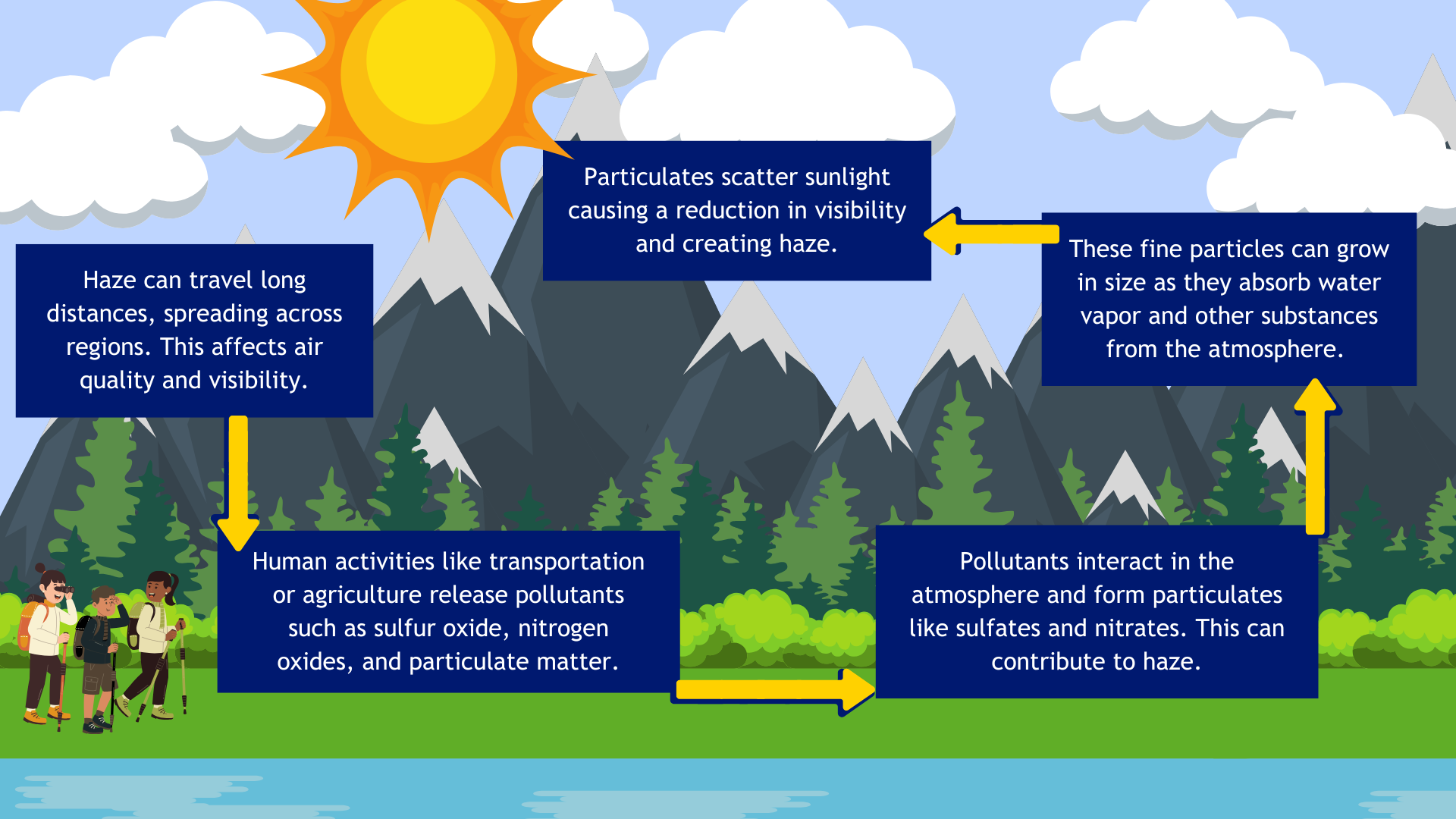Regional haze in Colorado
On this page: Overview | Environmental and health impacts | Class 1 areas | Additional regional haze resources | Contact us
Overview
Regional haze is a common type of air pollutant. Haze occurs when sunlight interacts with tiny pollution particles in the atmosphere. Haze reduces visibility in the air. The pollution particles absorb and scatter light, reducing clarity and color. This causes the light to be diffused before it reaches our eyes. Some particles, like sulfates, scatter more light, especially when the air is humid. Haze affects larger areas and can travel long distances from the original pollution sources.
Haze is primarily caused by fine particles such as dust, smoke, and chemicals in the air. These particles come from both natural sources and human activities. When sunlight hits these particles, it scatters and absorbs the light, reducing visibility.
- Natural sources include windblown dust and smoke from wildfires.
- Human-made sources include car exhausts, pollution from power plants, burning of fuels, and other industrial activities.

Figure 1. The formation of regional haze.
Environmental and health impacts
The pollution that causes haze can have serious effects:
- Health risks: Breathing very small particles can lead to respiratory issues, reduced lung function, and even premature death.
- Environmental damage: Some of these pollutants contribute to acid rain, which harms ecosystems, kills fish in lakes and rivers, and erodes buildings and historical monuments.
- Regional scale: Regional haze can travel across large areas, affecting visibility over hundreds of miles, unlike local pollution.
- For example, haze in the Western United States can reduce visibility in national parks, where natural beauty is often diminished due to poor air quality. This can be the case even though the pollution might have started far away.

Figure 2. Example of the effect of haze from the National Park Service.

Figure 3. Example of haze from the National Park Service.
Class 1 areas
Class 1 areas are often considered pristine or protected zones, such as national parks, wilderness areas, and remote ecological reserves.
These regions are designated by environmental agencies or governments to maintain natural conditions free from the adverse effects of air pollution. The air quality in these areas must be carefully preserved because they may be home to sensitive ecosystems or species that could be harmed by even small increases in pollutants. The Clean Air Act includes a special category for Class 1 areas. The law sets stricter air quality standards for these areas and allows only minimal changes to air quality levels. There are several designated Class 1 areas in Colorado, as shown in Figure 4.

Figure 4. Colorado Class 1 areas
Colorado has created a plan to reduce haze and improve air quality in line with federal requirements. The EPA approved the state’s Regional Haze Plan for the first planning period in 2011. The state has updated the plan several times since then, including changes made to reduce emissions from power plants. The state submitted its Regional Haze Plan for the second planning period to the Environmental Protection Agency (EPA) in 2023. The state also submitted its Regional Haze Progress Report for the second planning period to the EPA in January 2025.
Additional regional haze resources
- Western Regional Air Partnership Landscape of Forever: Visibility Protection in the West.
- EPA Visibility and Regional Haze.
- IMPROVE: Interagency Monitoring of Protected Visual Environments.
- Western Regional Air Partnership.
Contact us
Questions? Email the CDPHE Air Pollution Control Division at cdphe.commentsapcd@state.co.us.
Stay informed. Subscribe to receive email updates from the division.